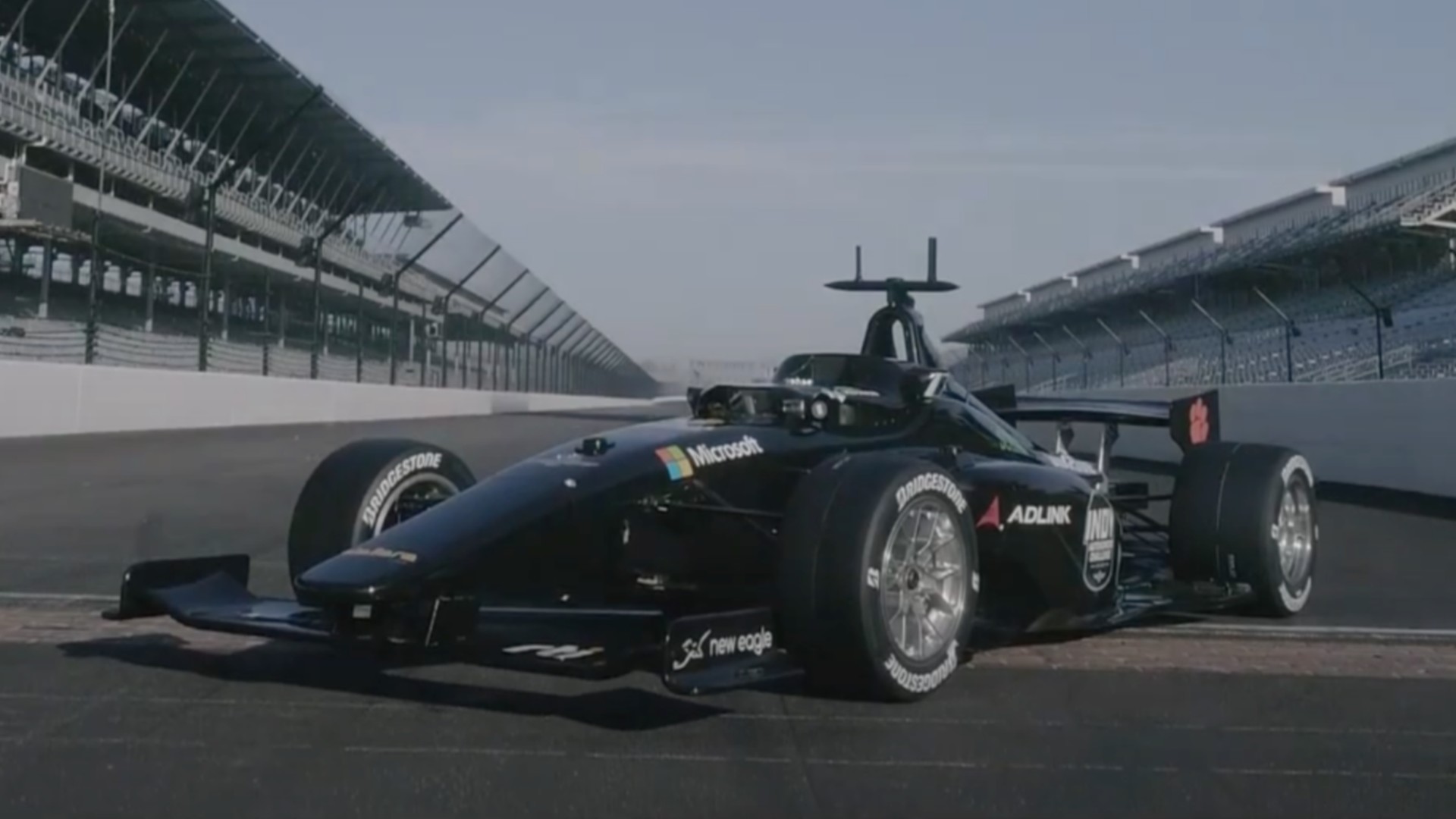

Monday, we got our first glimpse of the beast our new robot overlords will wield against each other—and maybe us—come the Car Wars of the mid-2020s. IndyCar announced last summer that the 2021 Indy 500 race weekend would feature autonomous race cars competing for a $1 million prize. This, then, is said autonomous race car.
“What’s a robot going to spend that on?” You might ask. Well, aside from likely spare parts and repairs after a few runs ’round The Brickyard, a particularly successful AI could hope to go on to an Indy Lights career.

The Indy Autonomous Challenge car unveiled today is a modified version of the Dallara IL-15 chassis, which is being touted as the fastest autonomous race car ever.
Paul Mitchell, president and CEO of ESN and co-organizer of the IAC, said in a release today, “The Dallara-built IAC race car is the most advanced, fastest autonomous vehicle ever developed. Our IAC sponsors are providing radar, lidar, optical cameras and advanced computers, bringing the value of each vehicle to $1 million.”
The IAC is awarding $1 million to the team that wins the physical race, with $250,000 going to the runner up and $50,000 to third place. Event sponsor Ansys is also providing a $150,000 prize to the winner of the simulation race.
Autonomous race cars aren’t new, although arguably they are yet to be particularly successful. Since Roborace revealed its wobbly but enthusiastic first draft DevBot in 2016, there have been several attempts, including an ongoing Season Beta that’s seen the very sexy Robocar, developed only for AI, hit the track. And some barriers.

Whether the teams of engineers and software designers involved in IAC can fare any better remains to be seen; however, if they really do have a car faster than Roborace, then seeing AIs go over 175 miles per hour at Indy should be extremely cool. Especially because these AIs will be loud.
Roborace, like most commercial autonomous vehicle developers, uses electric cars. However, on the list of modifications made to the Indy Lights car, IAC has said nothing about swapping the 2.0-liter, 450-horsepower four-cylinder engine for battery power.
Their release says, “The modified Dallara is retrofitted with hardware and controls to enable automation to enhance safety, control and performance. Components include rugged-edge on-board computing, vehicle-to-vehicle communications, perception systems, high-end graphics processing units (GPUs), drive-by-wire, and artificial intelligence acceleration and powerful central processing units to run IAC teams’ software and algorithms in the racecar.”
This means a whole lot of wiring, radar, lidar, cameras to enable computer “vision” and a whole host of onboard computers to actually do the maths on when to hit the brake or throttle. But it definitely doesn’t say anything about a battery.
You’d probably be hard-pressed to jam one into the back of an Indy Lights car, in any case, so look forward to a summer of petrolheaded robots hitting the ovals.

Got a tip? Send us a note: tips@thedrive.com